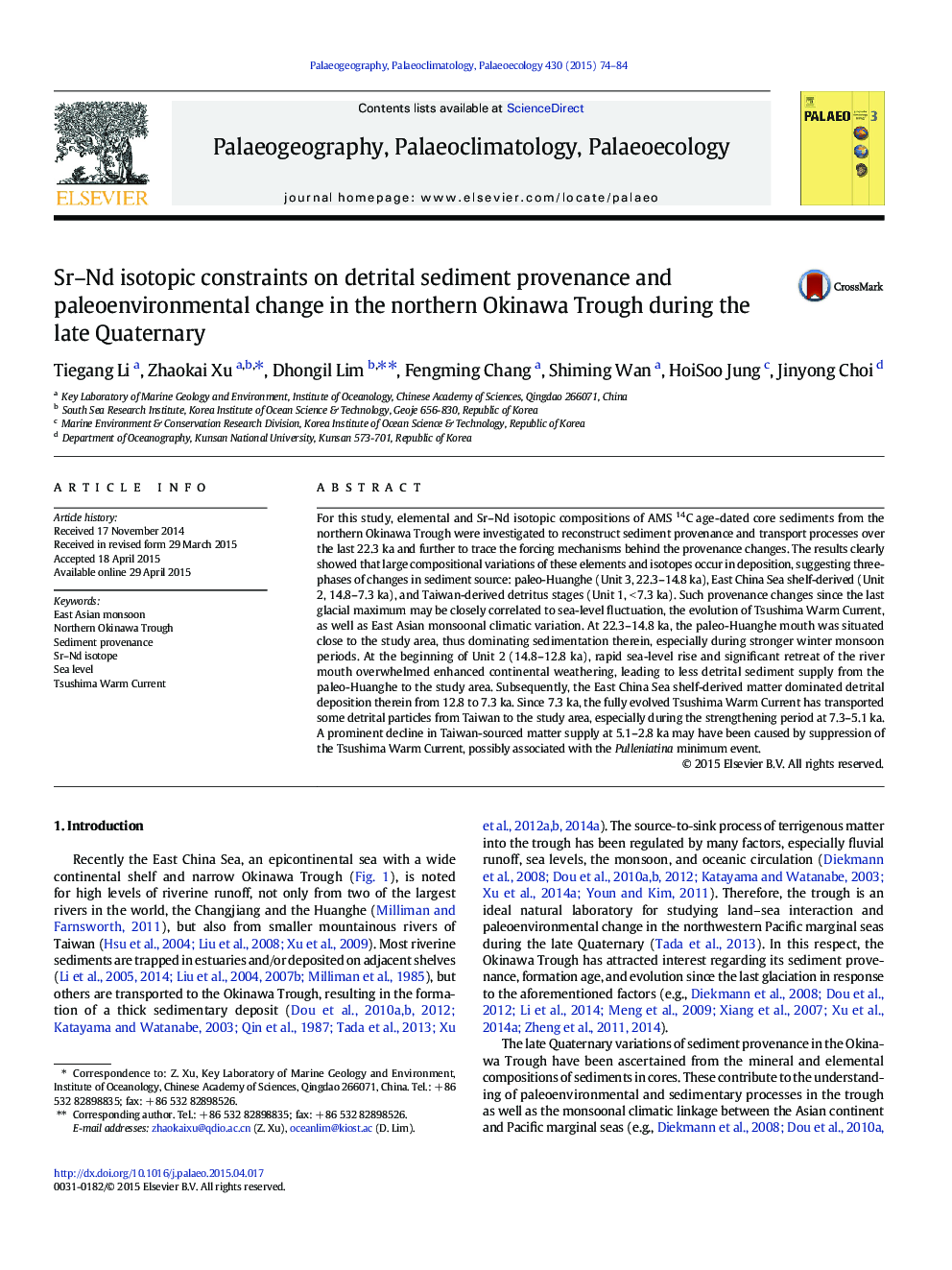| Article ID | Journal | Published Year | Pages | File Type |
|---|---|---|---|---|
| 4465944 | Palaeogeography, Palaeoclimatology, Palaeoecology | 2015 | 11 Pages |
•We report 22 ka Sr–Nd isotopic records in the northern Okinawa Trough.•Sr–Nd isotopes indicate the clear threefold changes of sediment provenance.•Sea level and oceanic circulation controlled detrital sediment transport.•Tsushima Warm Current formed at 7.3 ka and suppressed at 5.1–2.8 ka.
For this study, elemental and Sr–Nd isotopic compositions of AMS 14C age-dated core sediments from the northern Okinawa Trough were investigated to reconstruct sediment provenance and transport processes over the last 22.3 ka and further to trace the forcing mechanisms behind the provenance changes. The results clearly showed that large compositional variations of these elements and isotopes occur in deposition, suggesting three-phases of changes in sediment source: paleo-Huanghe (Unit 3, 22.3–14.8 ka), East China Sea shelf-derived (Unit 2, 14.8–7.3 ka), and Taiwan-derived detritus stages (Unit 1, < 7.3 ka). Such provenance changes since the last glacial maximum may be closely correlated to sea-level fluctuation, the evolution of Tsushima Warm Current, as well as East Asian monsoonal climatic variation. At 22.3–14.8 ka, the paleo-Huanghe mouth was situated close to the study area, thus dominating sedimentation therein, especially during stronger winter monsoon periods. At the beginning of Unit 2 (14.8–12.8 ka), rapid sea-level rise and significant retreat of the river mouth overwhelmed enhanced continental weathering, leading to less detrital sediment supply from the paleo-Huanghe to the study area. Subsequently, the East China Sea shelf-derived matter dominated detrital deposition therein from 12.8 to 7.3 ka. Since 7.3 ka, the fully evolved Tsushima Warm Current has transported some detrital particles from Taiwan to the study area, especially during the strengthening period at 7.3–5.1 ka. A prominent decline in Taiwan-sourced matter supply at 5.1–2.8 ka may have been caused by suppression of the Tsushima Warm Current, possibly associated with the Pulleniatina minimum event.
